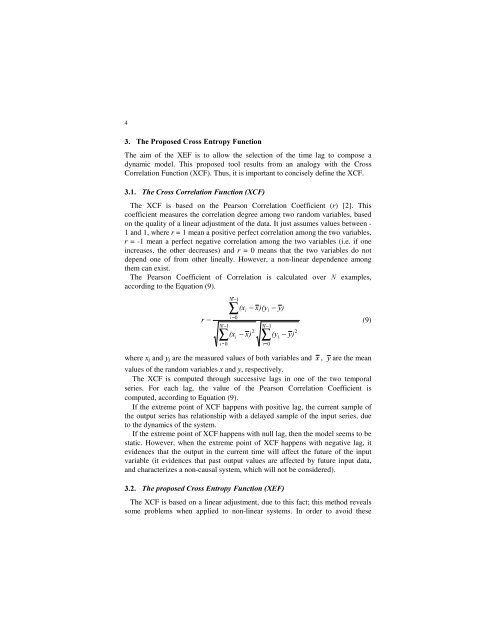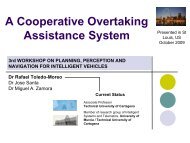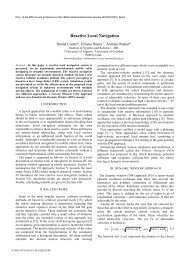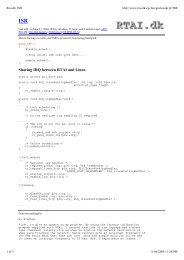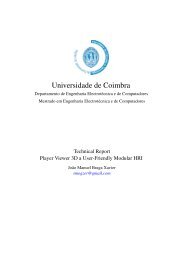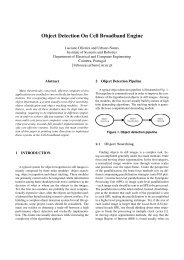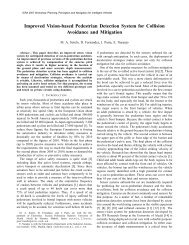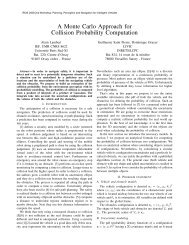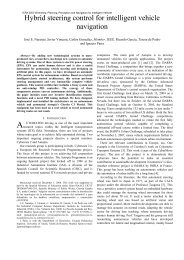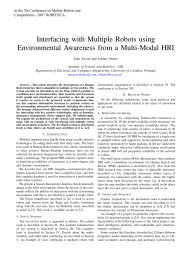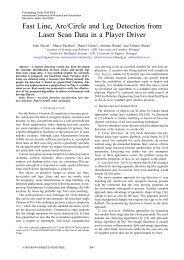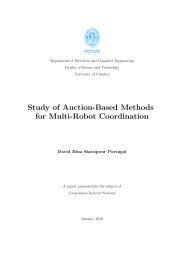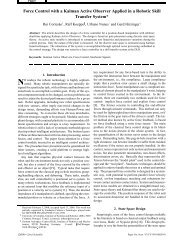()£1 0 2 3$ 41 !©¡©#5 ¥6 8 79 @8!
()£1 0 2 3$ 41 !©¡©#5 ¥6 8 79 @8!
()£1 0 2 3$ 41 !©¡©#5 ¥6 8 79 @8!
Create successful ePaper yourself
Turn your PDF publications into a flip-book with our unique Google optimized e-Paper software.
€€€47KH3URSRVHG&URVV(QWURS\)XQFWLRQThe aim of the XEF is to allow the selection of the time lag to compose adynamic model. This proposed tool results from an analogy with the CrossCorrelation Function (XCF). Thus, it is important to concisely define the XCF.7KH&URVV&RUUHODWLRQ)XQFWLRQ;&)The XCF is based on the Pearson Correlation Coefficient (U) [2]. Thiscoefficient measures the correlation degree among two random variables, basedon the quality of a linear adjustment of the data. It just assumes values between -1 and 1, where U = 1 mean a positive perfect correlation among the two variables,U = -1 mean a perfect negative correlation among the two variables (i.e. if oneincreases, the other decreases) and U = 0 means that the two variables do notdepend one of from other lineally. However, a non-linear dependence amongthem can exist.The Pearson Coefficient of Correlation is calculated over 1 examples,according to the Equation (9).−1∑0−1∑[ − [\0 2[ − [−1∑0− \U (9)2\ − \where [‚ and \‚ are the measured values of both variables and [ , \ are the meanvalues of the random variables [ and \, respectively.The XCF is computed through successive lags in one of the two temporalseries. For each lag, the value of the Pearson Correlation Coefficient iscomputed, according to Equation (9).If the extreme point of XCF happens with positive lag, the current sample ofthe output series has relationship with a delayed sample of the input series, dueto the dynamics of the system.If the extreme point of XCF happens with null lag, then the model seems to bestatic. However, when the extreme point of XCF happens with negative lag, itevidences that the output in the current time will affect the future of the inputvariable (it evidences that past output values are affected by future input data,and characterizes a non-causal system, which will not be considered).7KHSURSRVHG&URVV(QWURS\)XQFWLRQ;()The XCF is based on a linear adjustment, due to this fact; this method revealssome problems when applied to non-linear systems. In order to avoid these


